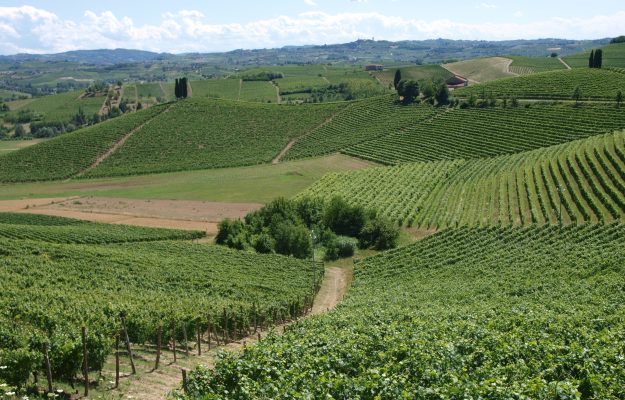Barbera d’Asti is one of the oldest and most characteristic Piedmont wines, and it is now set to become “2.0” focusing on the “sensory map” of Barbera d’Asti DOCG. It is an innovative study to better define the large territory of the denomination (5.300 hectares on hills in the 167 Municipalities in the provinces of Asti and Alessandria), specifically linking the Barbera d’Asti wine characteristics to the geological and microclimatic differences that define the area of production. It is sort of a zoning of the sensorial profile of wines. The research for the creation of this unprecedented “map” started in 2017, on the project created by the Consorzio Barbera d’Asti and Vini del Monferrato, together with the University of Turin and the sponsorship of the Piedmont Region. The goal of the project is to define the sensory profiles, the chemical-physical knowledge, and to clarify and enhance the identity profiles of each production area, both in terms of pedoclimatic characteristics as well as their imprint on the sensory profile.
Experienced and academic technicians began with experimental and monitoring activities in the production areas on vineyards which, due to altitude, age of the vines, exposure and soil composition, were the most typical in their area. The resulting technical-scientific research was then divided into two phases. The first focused on observation and analyzing factors in the vineyards such as climate trends ( including all its variables, such as thermal excursion and precipitation), structure of the soil and the analysis of the grapes (using the maturation curve, in which the phenolic component, pH, sugars and acidity are analyzed).
Regarding this first phase, tests on micro-harvests and micro-winemaking were then made, so that samples of Barbera d’Asti grapes taken from the vineyards to be analyzed were made into wine separately, using the same process, aiming to preserve the varietal expression and the area of origin. This was an important element to define the correlation between vineyards and sensory, chemical and physical characteristics the wines express.
The second phase of the research was dedicated to testing wines currently on the market (82 Barbera d’Asti DOCG wines, 2016 harvest, 29 “Superiore” type harvest 2015) taken from 97 different companies. The Consortium and its members collected 111 samples of Barbera d’Asti. This was a significant sampling representing the typologies currently available, which were submitted to a tasting commission made up of winery technicians and researchers from the University of Turin.
Copyright © 2000/2025
Contatti: info@winenews.it
Seguici anche su Twitter: @WineNewsIt
Seguici anche su Facebook: @winenewsit
Questo articolo è tratto dall'archivio di WineNews - Tutti i diritti riservati - Copyright © 2000/2025









































































































































































































